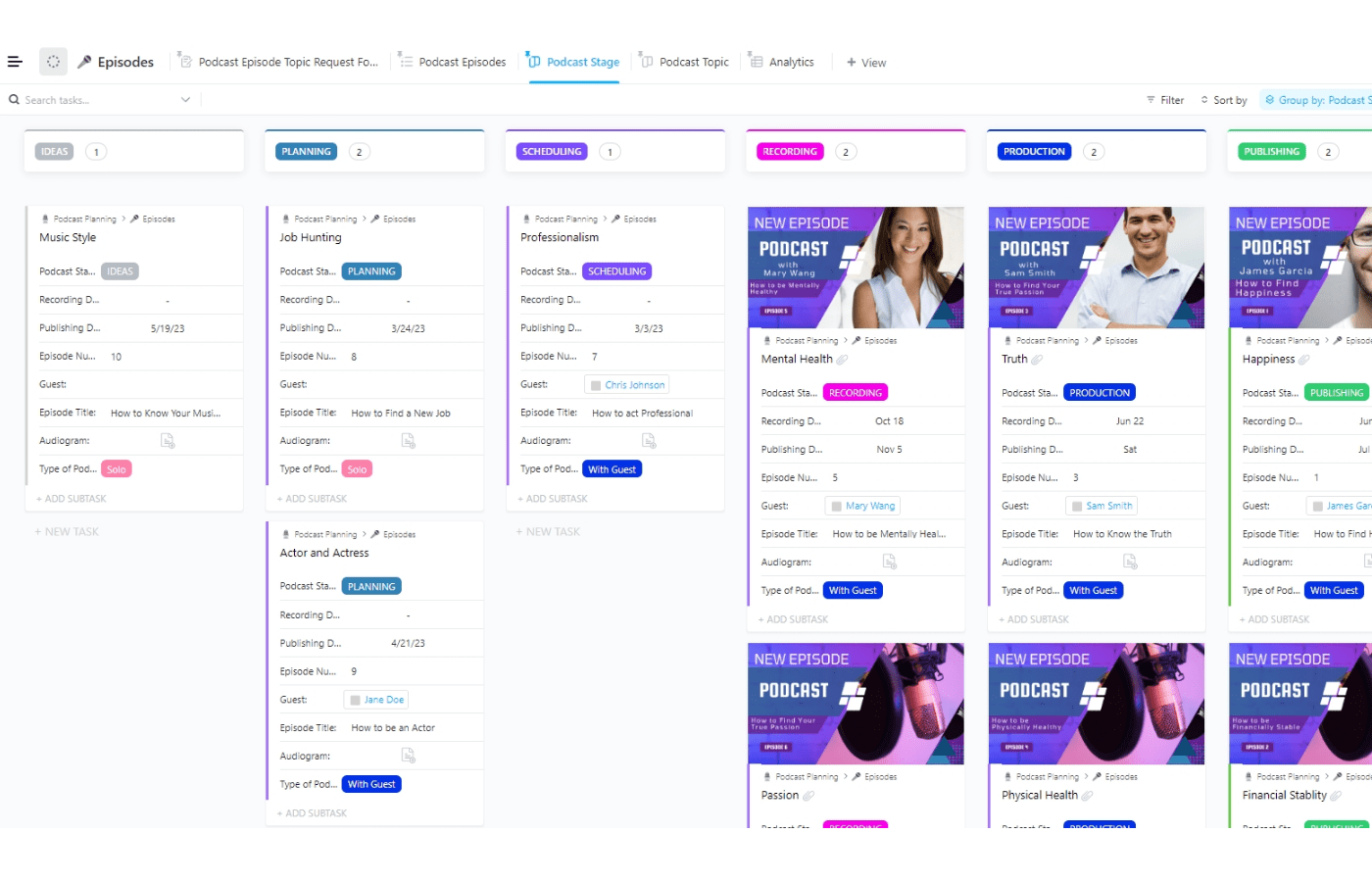Asana is a great resource for project management within an SEO firm. In this article, we will explore the most streamlined ways to leverage Asana’s features in order to have a highly organized SEO team.
Organization
To start out, you’ll want to create an organization for your company. So if your company is called SEO Geniuses, then the organization will be called SEO Geniuses. Equally, if your email address is @seogeniuses.com, then anyone who joins Asana with that email address will be added to your organization.
You can also invite people who are not currently within your company. So let’s say you have a client at Walmart. You can invite them to the Asana organization, and they would join with their @walmart.com email address as an Organization Guest.
Workspace
You can use the workspace as a shared area for groups of users to work on a project. Users will be able to collaborate, track milestones, add comments, and create tasks (and subtasks) within a workspace. You can create multiple workspaces for each designated team or project. So you could have a workspace for PPC, a workspace for FB ads, a workspace for content marketing, etc. Once you have a workspace, you can create a project. The project will be the structural collection of tasks that are required in order to achieve a goal.
You can also create a workspace just for yourself. It could act as a sacred little repository for a mind dump of all of your goals and action items for the month, week, or year. It’s a great place to project manage your life as well!
If you do use Asana for managing projects or tasks related to multiple clients or teams, then you should create a separate Workspace for each entity.
Project
Projects are the space where you can create lists of specific tasks that need to be completed in order to achieve a goal. Examples of projects could be New Google Ads Campaign or On-Page SEO Improvement Items.
When you create a project, remember to give it a descriptive name that identifies the goals of the project. This makes it easy for coworkers to collaborate and be on the same page. One awesome feature within Asana is that you can choose how you’re going to visualize your tasks within a project. You can choose a list-style project or a board style project.
A list style will be just that: all tasks displayed in a linear to-do list. This is the optimal way to organize things when your project has a lot of tasks. The board style project displays tasks as if they were sticky notes on a board. Using this style, you would put similar tasks under one column, then other tasks under another column.
When you have your SEO items organized into projects on Asana, you can invite your clients into specific projects so they can track progress and stay in the loop with what you are working on each month.
Creating projects in Asana is fairly easy, but if you need help navigating the platform, there are several Asana tutorials you can refer to for guidance.
Read More: Top 10 Project Management Software
Templates
If you have a set protocol of jobs you provide for each client, then you can create project templates. This is extremely useful for keeping things in order. In the template, you will be able to save common tasks per project, making it easy for you as a project manager and your team to get started. For example, you may make a template for “Onboarding Clients. ” Within this template, you could have a project for social access, Google Analytics, GSC, Google My Business, etc. The template will have predefined tasks and a readymade structure for managing and orchestrating a project.
Recurring Tasks
You can create recurring tasks in Asana and set it to repeat at a fixed interval. So if you have somebody doing link building efforts every week, you can set a task that is due every Monday at 5 pm. You can then assign that task to the relevant person. This will save the trouble of creating the same task every week.
Subtasks
One of my favorite parts of Asana is how granular you can get. You can create subtasks within tasks so that everything is organized according to the corresponding category. This is extremely helpful if there are multiple steps within a task or multiple steps within one step of a task. Subtasks also come in handy when there are multiple team members working on a project. In our complete Asana software review, we highlighted the platform’s collaboration tools as some of its key features, and the option to create subtasks is definitely a standout. So, for example, let’s say you’re creating a new page. You can create subtasks for content writing, web page design, on-page optimization, technical SEO elements, etc. All of the different people working together toward one goal of creating a perfectly optimized webpage.
All in all, I see Asana almost like a brain massage for work! It organizes tasks, teams, timelines, and milestones into a super user-friendly interface. The gratifying unicorn that dashes across the screen when you complete a task will give you warm feelings. It’s overall a great project management interface. It’s especially useful for big teams and remote teams. If you need a great tool to generate custom reports and charts for Asana, we recommend using Bridge24 for Asana.





